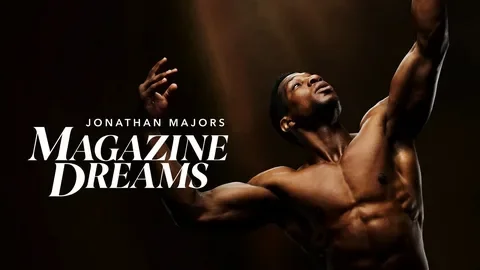“Magazine Dreams” is a film that captivated audiences with its unique premise, intense performances, and dark, thought-provoking themes. Written and directed by Elijah Bynum, the film stars Jonathan Majors as Killian Maddox, an aspiring bodybuilder navigating ambition, mental unrest, and personal identity.
This article provides a comprehensive look at Magazine Dreams, covering its origins, production, plot, themes, performances, release challenges, and its significance in contemporary cinema.
Origins & Production
The film was conceived as a character-driven study of obsession and aspiration. Jonathan Majors underwent a dramatic physical transformation for his role, embodying the rigorous lifestyle of a competitive bodybuilder. The cinematography, handled by Adam Arkapaw, captures the raw intensity of Killian’s world with striking visuals and an immersive, almost claustrophobic atmosphere.
Filming took place under tight constraints, aiming to depict both the grandeur and the isolation inherent in the protagonist’s life. The movie premiered at the Sundance Film Festival, generating early buzz for its daring approach to storytelling.
Plot Summary
“Magazine Dreams” is less a conventional sports or motivational story and more a psychological portrait. Killian Maddox dreams of being the face of fitness magazines but struggles with isolation and recognition. He trains obsessively, writes to his idols, and lives a life punctuated by solitude and social disconnection.
The film explores Killian’s relationships with his grandfather, romantic interests, and the wider society, portraying his mental health struggles and the consequences of his obsessive drive. Its narrative is fragmented and dreamlike, emphasizing internal conflict over external action.
Themes & Motifs
-
Ambition vs. Invisibility: Killian’s yearning to be recognized contrasts sharply with the neglect and marginalization he experiences.
-
Body & Identity: His muscular physique symbolizes both power and entrapment, reflecting the pressures of societal expectations.
-
Alienation & Rage: The protagonist’s size and obsession isolate him, leading to emotional volatility.
-
Race & Class: The film examines societal structures and the pressures faced by a Black man striving for acknowledgment.
-
Performance & Reality: The tension between the body as spectacle and the mind as burden underscores the narrative.
Performances & Technical Merits
Jonathan Majors’ portrayal of Killian is widely regarded as the film’s standout element. Critics have praised his commitment to the role, both physically and emotionally, highlighting his ability to convey vulnerability behind an imposing exterior.
The cinematography uses dramatic lighting, mirrors, and tight framing to emphasize the character’s internal struggles. The combination of visual style and performance creates an unsettling yet compelling atmosphere, though some reviews note structural weaknesses in pacing and narrative cohesion.
Release & Challenges
The film’s release faced several complications. Initially acquired by a major studio, it was later dropped due to external controversies surrounding the lead actor. Eventually, a smaller distributor picked up the rights, leading to a delayed release.
Despite these hurdles, the film found its audience, attracting attention for its bold storytelling and intense character study. Its delayed release also highlighted the impact of off-screen events on a film’s trajectory and reception.
Critical Reception & Audience Response
Critics have generally praised the performances and thematic depth of Magazine Dreams, while noting some narrative and structural shortcomings. Audience reactions are mixed, with many viewers appreciating the film’s artistic ambition but finding its tone and pacing challenging.
The film’s modest box office reflects both its niche appeal and the external factors affecting its release. Nonetheless, it has sparked conversations about body image, ambition, and the pressures of recognition in modern society.
Why “Magazine Dreams” Matters
-
Exploration of Obsession: The film presents a nuanced view of ambition and its psychological costs.
-
Body Image & Masculinity: It addresses societal expectations and pressures surrounding physical perfection.
-
Representation: The narrative highlights the challenges faced by Black men in a society that often marginalizes them.
-
Artistic Risk: The film exemplifies bold, character-driven indie cinema willing to explore complex themes.
Tips for Viewers
-
Expect an emotionally intense experience rather than a conventional inspirational story.
-
Focus on the lead performance and visual storytelling to appreciate the film fully.
-
Be prepared for ambiguity and symbolic storytelling rather than clear-cut resolutions.
Conclusion
“Magazine Dreams” is a challenging and uncompromising film that explores ambition, identity, and societal pressures. Jonathan Majors’ performance, combined with striking cinematography and a dark, thought-provoking narrative, makes it a noteworthy piece of contemporary cinema.
The film’s journey from production to release highlights both the artistic ambition and the real-world complexities of filmmaking in today’s industry, making it a compelling subject for discussion and analysis.

